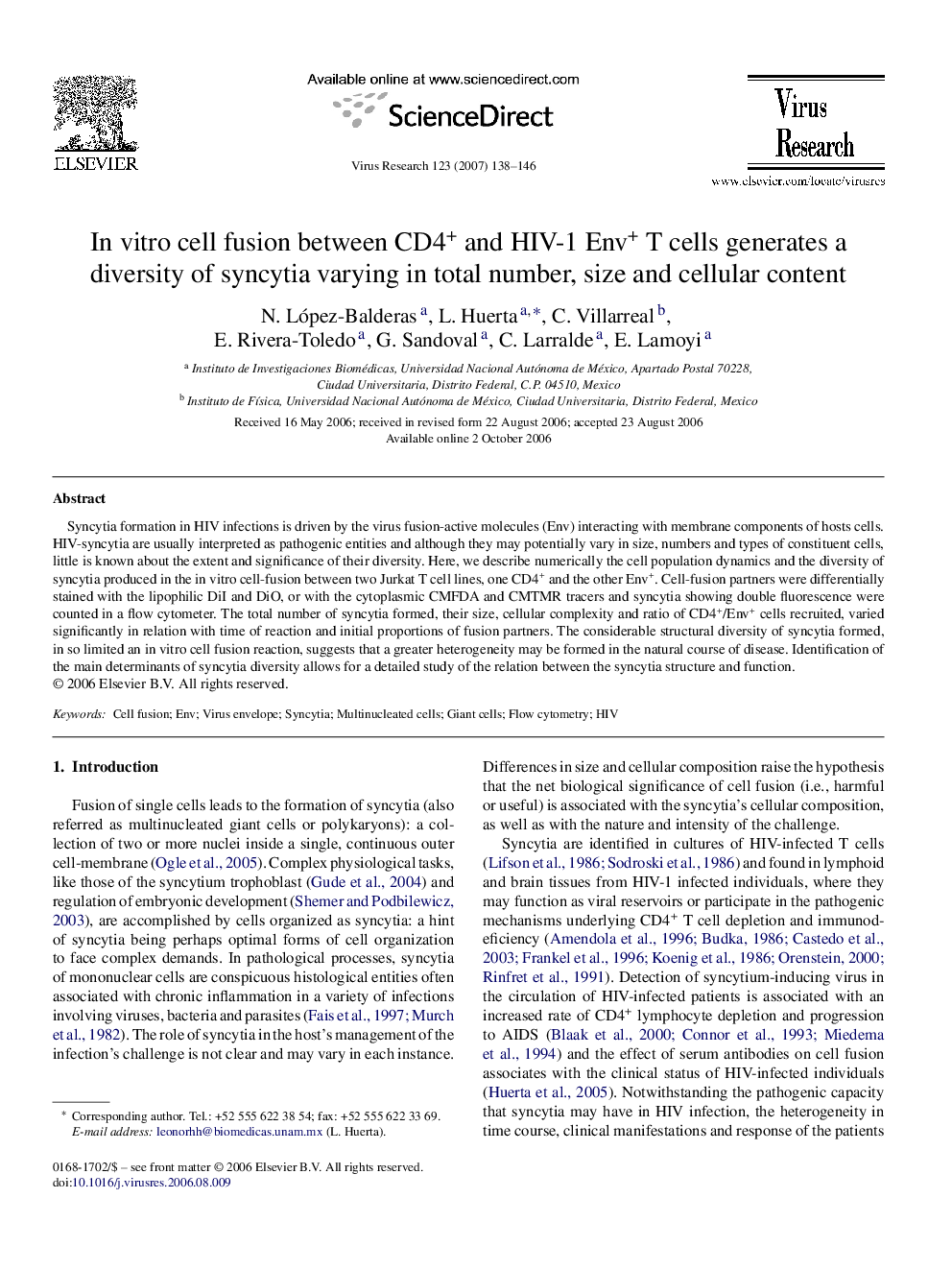| Article ID | Journal | Published Year | Pages | File Type |
|---|---|---|---|---|
| 3430861 | Virus Research | 2007 | 9 Pages |
Syncytia formation in HIV infections is driven by the virus fusion-active molecules (Env) interacting with membrane components of hosts cells. HIV-syncytia are usually interpreted as pathogenic entities and although they may potentially vary in size, numbers and types of constituent cells, little is known about the extent and significance of their diversity. Here, we describe numerically the cell population dynamics and the diversity of syncytia produced in the in vitro cell-fusion between two Jurkat T cell lines, one CD4+ and the other Env+. Cell-fusion partners were differentially stained with the lipophilic DiI and DiO, or with the cytoplasmic CMFDA and CMTMR tracers and syncytia showing double fluorescence were counted in a flow cytometer. The total number of syncytia formed, their size, cellular complexity and ratio of CD4+/Env+ cells recruited, varied significantly in relation with time of reaction and initial proportions of fusion partners. The considerable structural diversity of syncytia formed, in so limited an in vitro cell fusion reaction, suggests that a greater heterogeneity may be formed in the natural course of disease. Identification of the main determinants of syncytia diversity allows for a detailed study of the relation between the syncytia structure and function.
